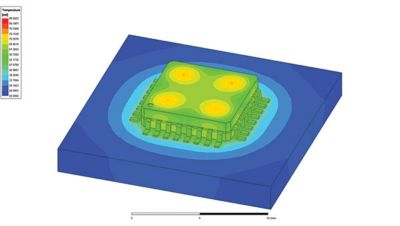-
-
학생용 무료 소프트웨어에 액세스하기
차세대 엔지니어에게 힘을 실어주는 Ansys
학생들은 세계적 수준의 시뮬레이션 소프트웨어를 무료로 이용할 수 있습니다.
-
지금 바로 Ansys에 연결하십시오!
미래를 설계하기
시뮬레이션이 다음 혁신을 어떻게 지원할 수 있는지 알아보려면 Ansys와 연결하십시오.
국가
무료 트라이얼
제품 및 서비스
학습하기
회사 정보
Back
제품 및 서비스
ANSYS BLOG
December 15, 2020
Cultivating the Next Generation of Engineers
When it comes to preparing the next generation of engineers, there’s a macro view and a micro view of what we need to do as educators. On the one hand, instructors in every discipline — electrical engineering, mechanical engineering, chemical engineering, and so on — want to instill in students a deep understanding of the fundamentals of their field.
That’s actually the micro view, though. It’s a focus on the skills and knowledge that inform expertise. It’s very practical and results-based, and it can produce very talented engineers.
But there’s another view of engineering: a macro or big-picture view. The macro view is equally important for educators to consider and cultivate in students — particularly now when the amount of expertise that informs the micro view keeps expanding. The big picture view that we must continue to cultivate in students contextualizes the expertise associated with the micro view.
Breaking Down the Barriers
In academia, it’s fine to be an expert. Indeed, there’s some truth to the idea that academic specialization leads to more and more knowledge about less and less. But educators do a disservice to students if we only try to make them experts. If students are planning to work after graduation — rather than go further in academia – then most will find themselves working with other engineers on a team.
That’s another reason why it’s important to cultivate a big picture view. It’s important that the next generation of engineers understands the dynamics of the teams they’ll be working with when they get out of school. They may be working with a team of fellow electrical engineers, but that team may be the smallest team in the broader engineering division. That team may also be the least critical team in the division.
Students need to understand how to work effectively with other engineers, which means they need to know how to communicate effectively with other engineers. It’s often surprising to electrical engineering majors that “resistance” does not always mean electrical resistance. A mechanical engineer may hear the word “resistance” and think thermal or mechanical resistance. Sooner or later, the EEs and the MEs on a team are going to have a conversation about something important, and they’ll find they can work together more effectively if they can speak the same language. It needs to be part of our agenda as educators to help all engineers have those conversations more effectively.
How do we do that? One way I do this is to bring students together from different engineering disciplines to work together on problems that present distinct multiphysics challenges. The electrical engineering students have to work with the mechanical engineering and materials science engineering students to find solutions to the challenges presented, and in doing so they begin to discover the ways in which their disciplines interact.
They discover that they need to find common terms to solve a common challenge. We cover plenty of theory in these classes — theories that draw upon or expand the expertise of each discipline in different ways – but the practical problem solving challenges that they overcome in the process of working on team projects provides a great education in macro-level engagement. They might enter my class in Electronics Packaging, for example, with a hope of learning about the electrical engineering challenges associated with loading ever higher numbers of semiconductors on a chip, but they emerge from the class with a tremendous awareness of the complex interplay between the electrical, mechanical and materials sciences engineering aspects of electronics packaging. They learn how to work together to solve problems; they lean how to communicate with people in different but related disciplines.
VA Tech students use Ansys Icepak to create temperature plots of the quad flat package (QFP) with four smaller die and mold material for the package.
Preparing Future Engineers
Hovering above this discussion of micro and macro views, of expertise and expertise-set-in-context, there’s the question of what’s important to employers. As noted, if an engineer’s ideal future employer is an academic institution where they can teach and do research, then a focus on the micro view may ultimately be most important. But if the engineer’s ideal future employer is an external company of some kind, then the ability to see things from a macro perspective is an asset. Too often, engineers hired right out of college have to spend a lot of time learning the macro skills – how to understand their role within the bigger corporate picture, how to play nicely with other engineering teams, how to communicate effectively with technical- and business-decision makers whose roles and responsibilities are new to them.
As educators, we can help flatten that learning curve and make our graduates more attractive to employers if we cultivate that macro view as part of our curriculum. Employers will always want to put their own imprimatur on a new hire and teach her or him how things are to be done within their organization. They look for expertise, so it’s important to excel at those elements in the micro realm, but they’re ultimately making hiring decisions based on the likelihood that someone with the right expertise is going to be a good fit within their existing organization.
That’s why we need to keep that macro view in mind. We can make the school-to-work transition easier and smoother for all parties if we cultivate an awareness of the macro context as part of a broader engineering curriculum.


